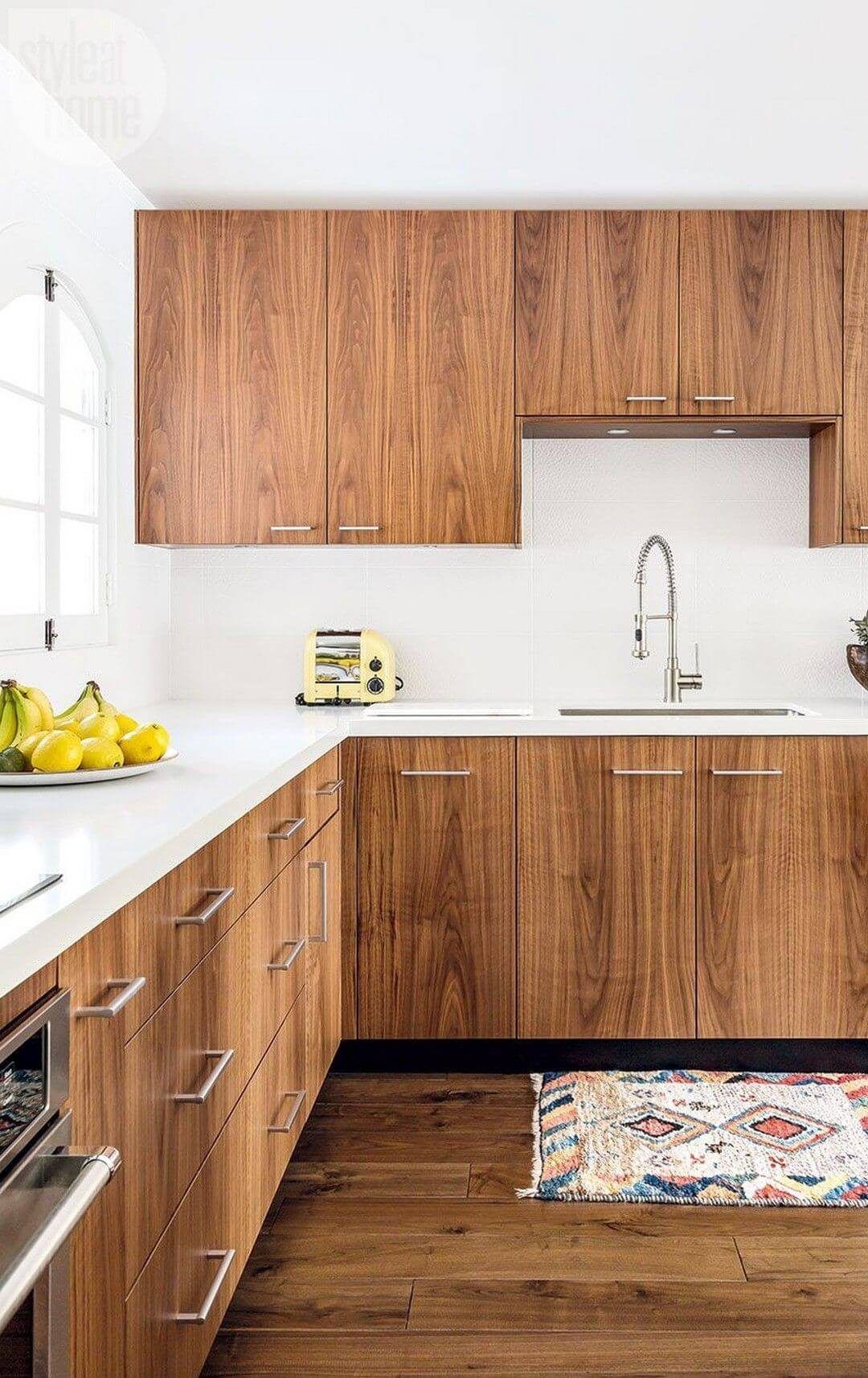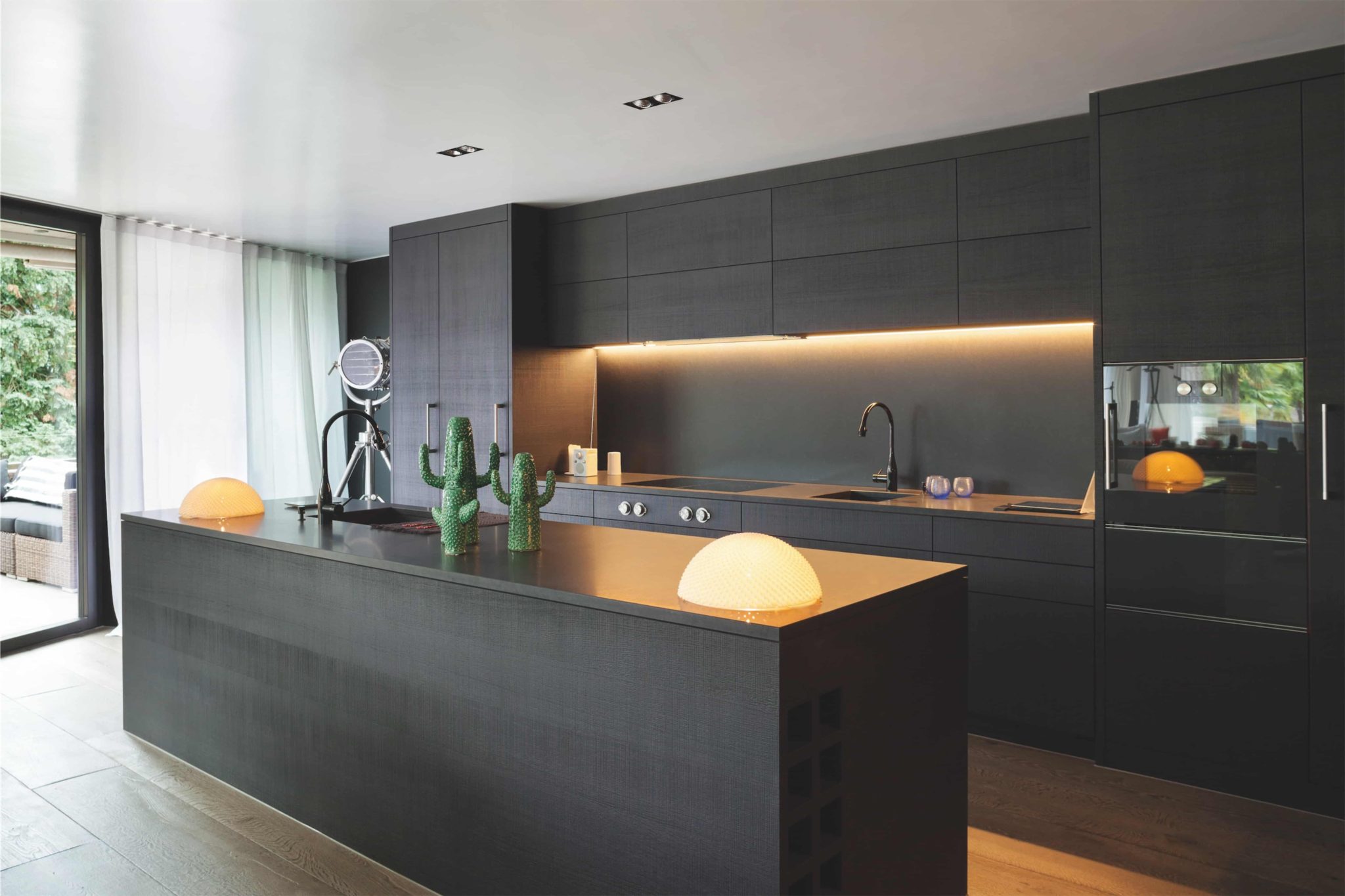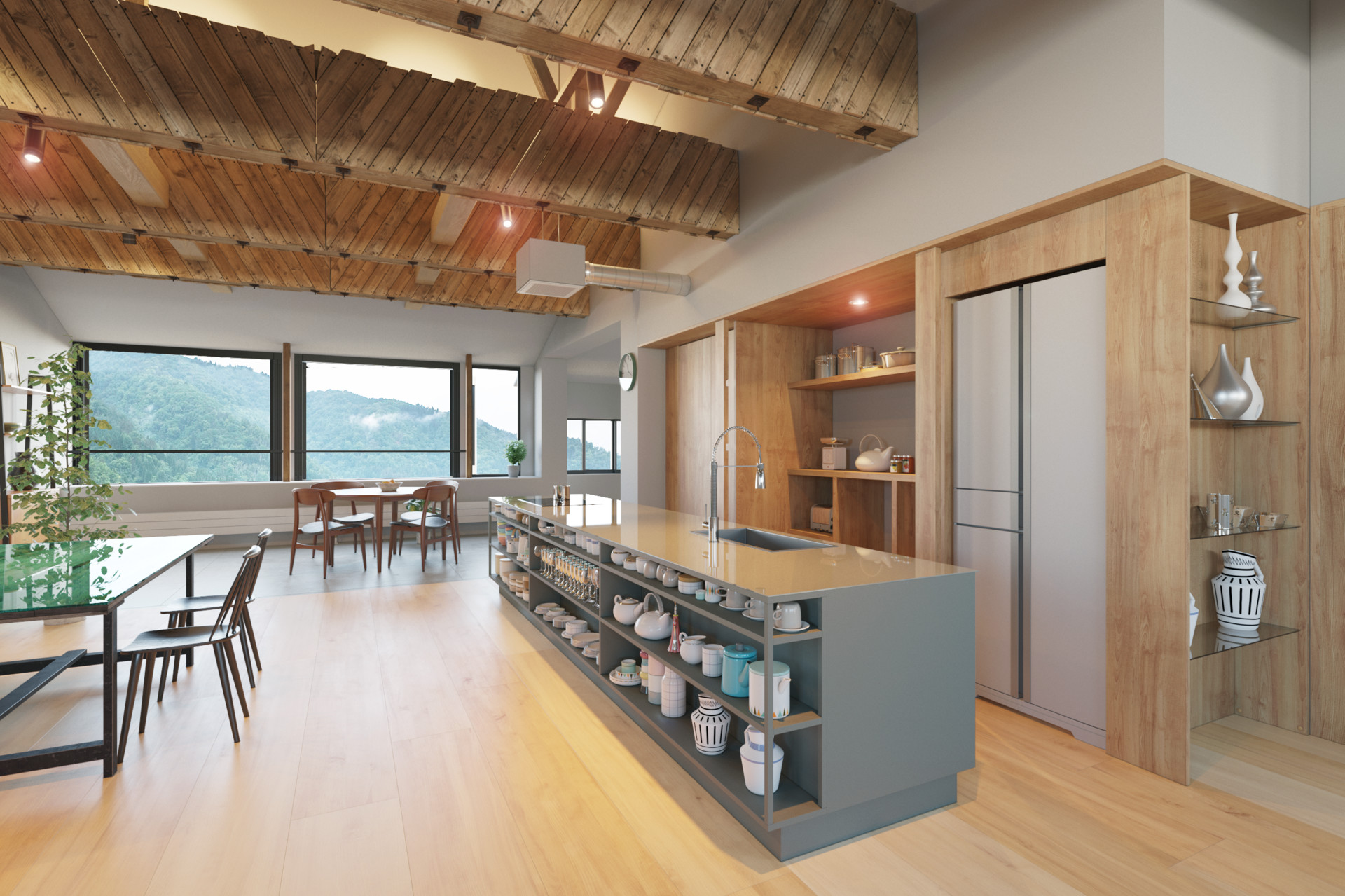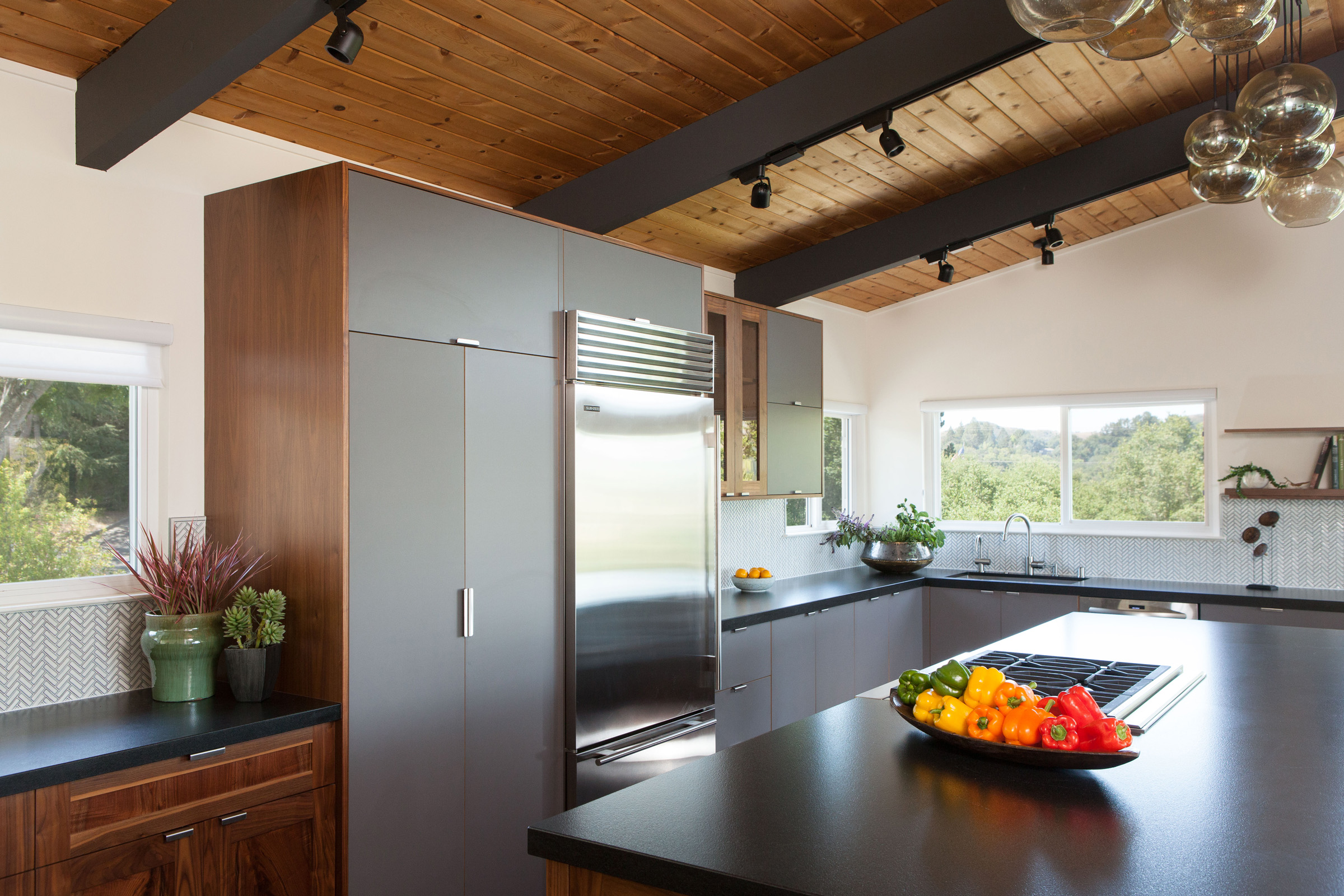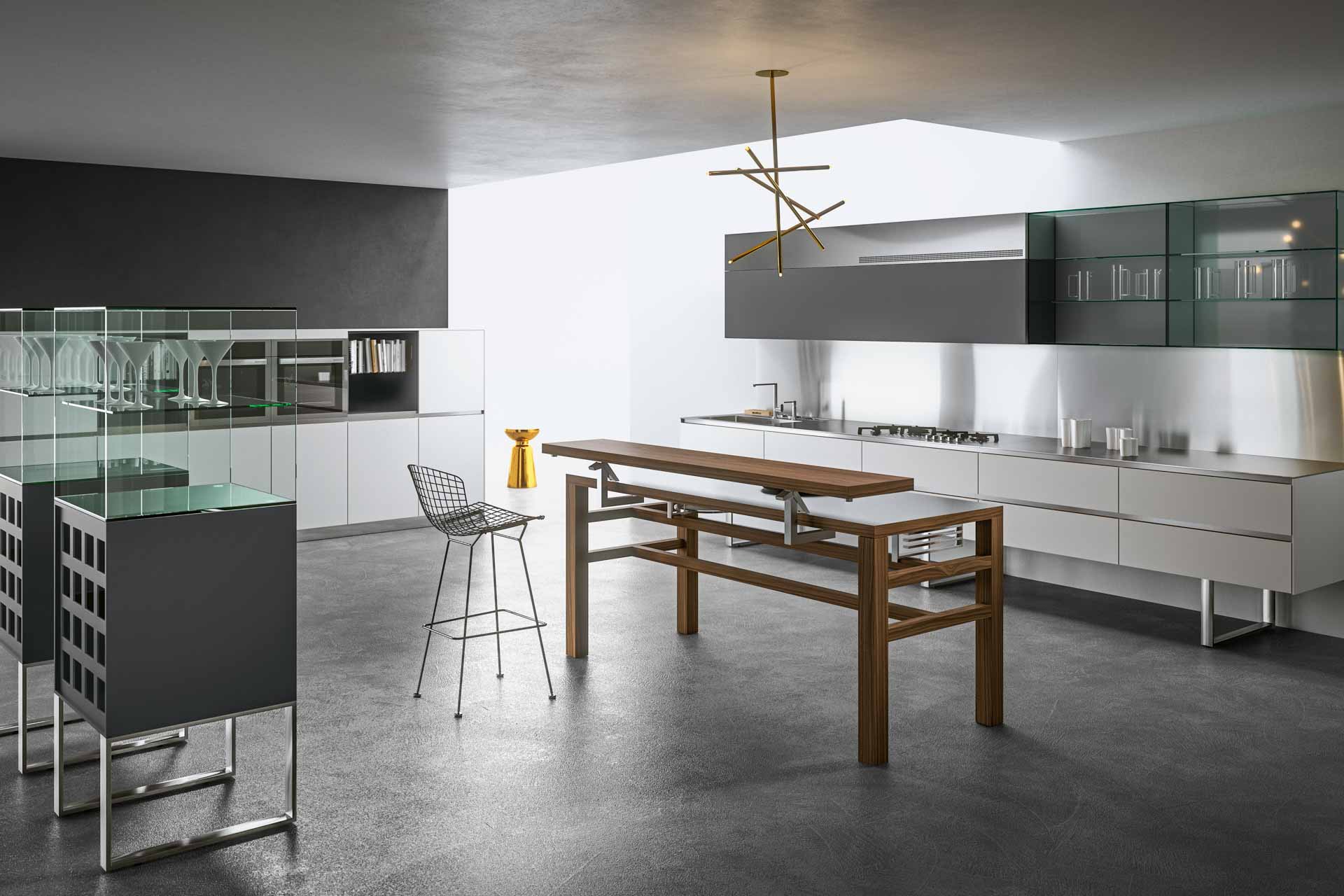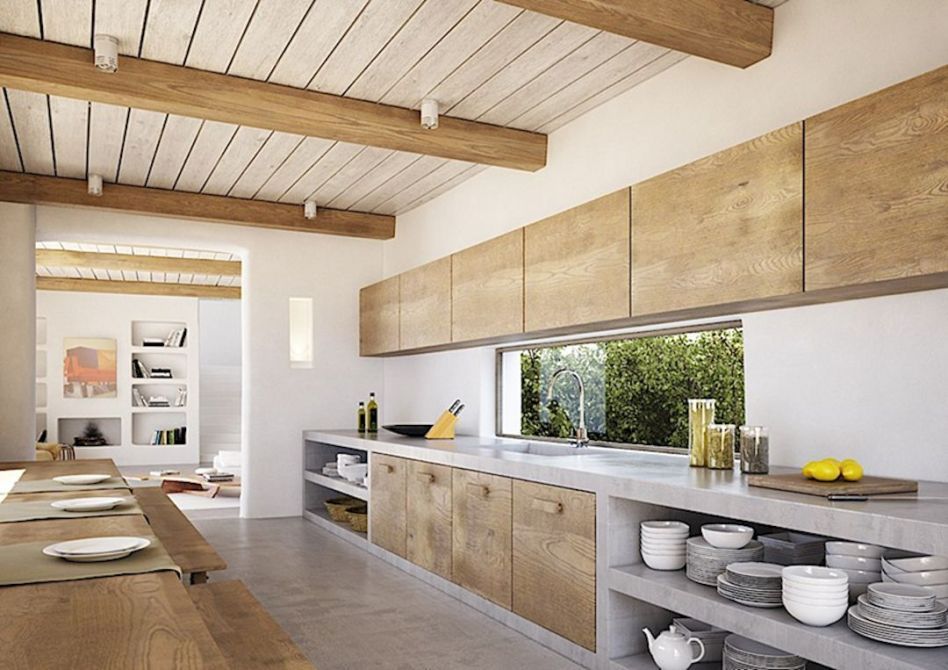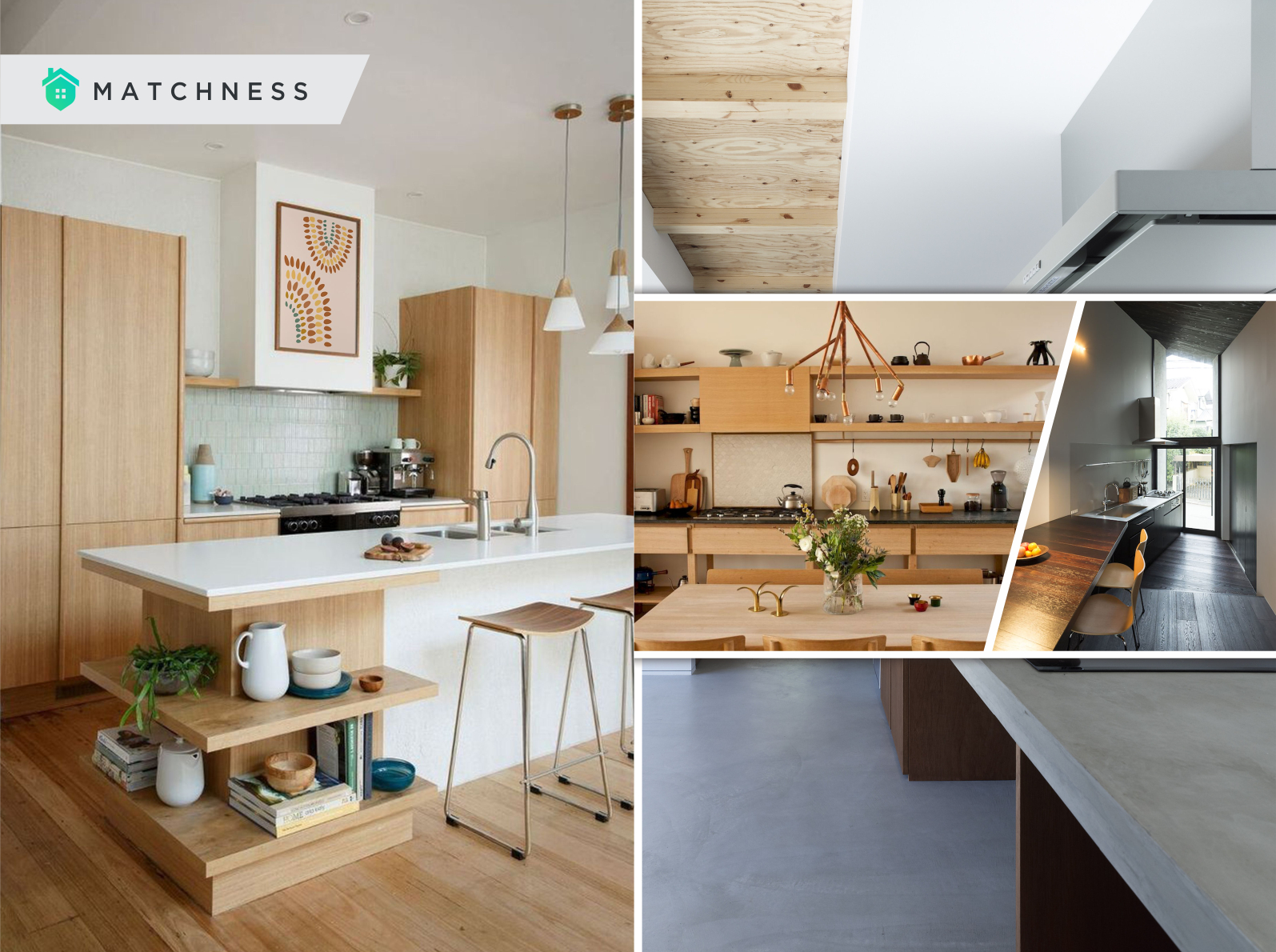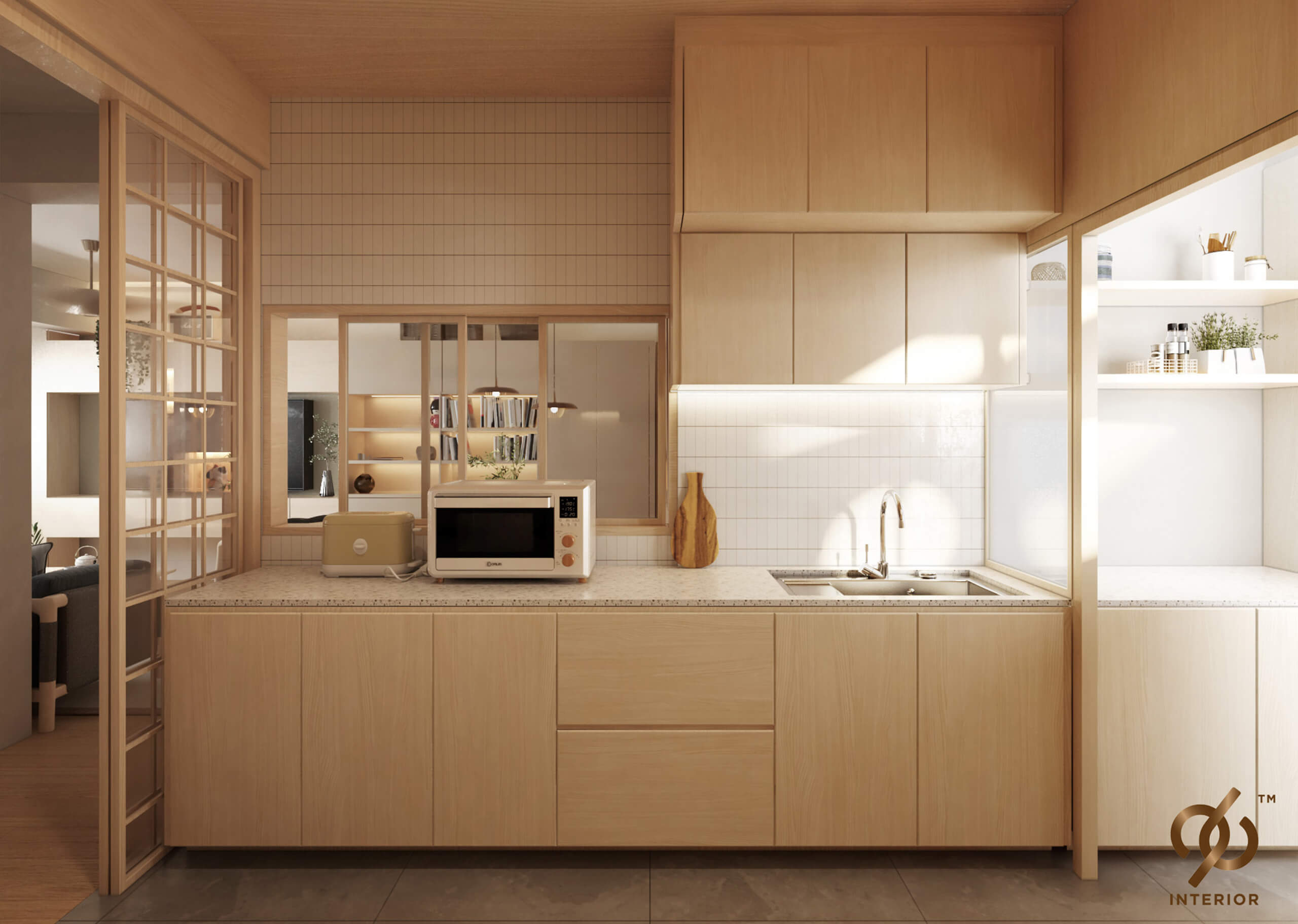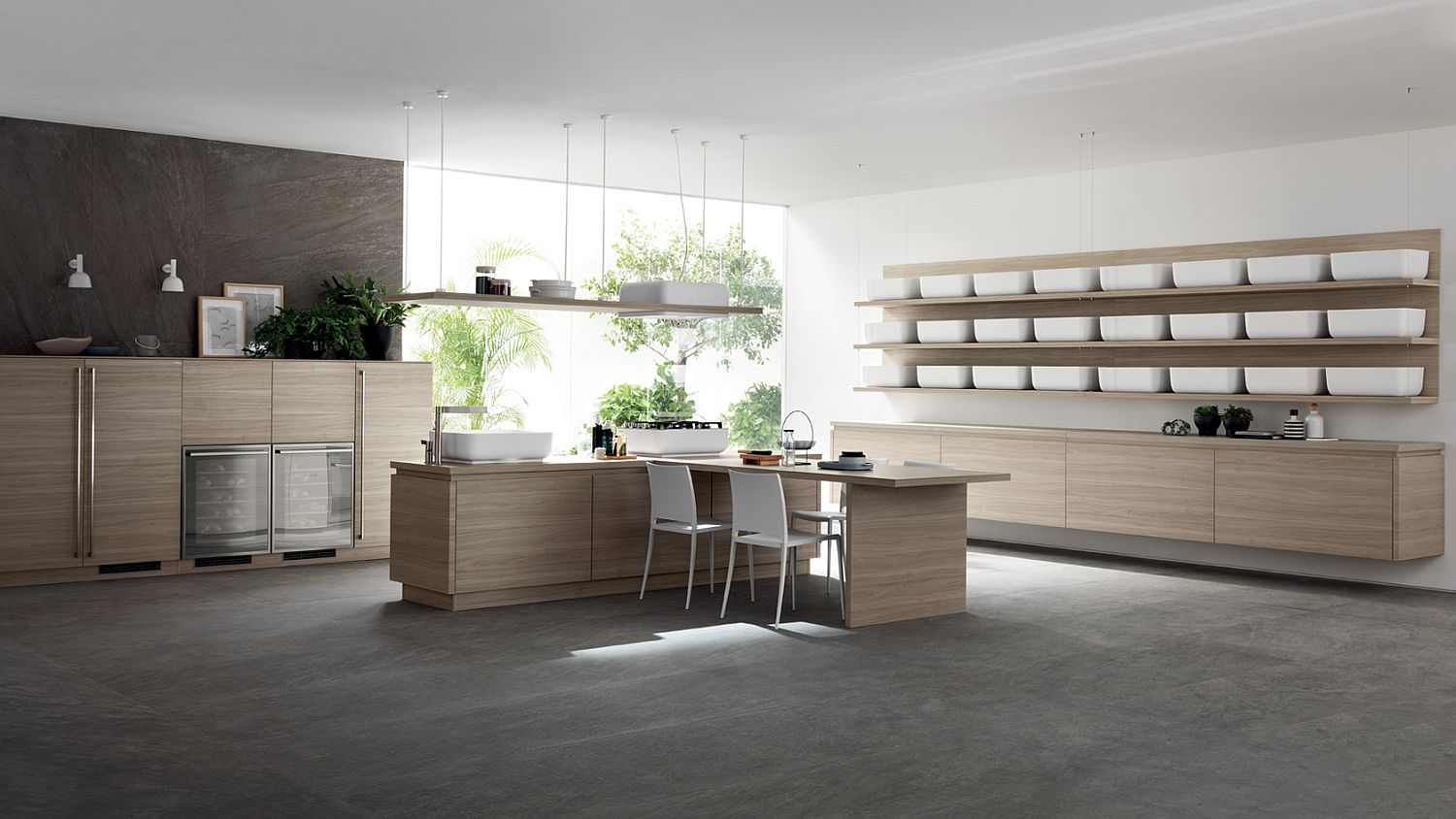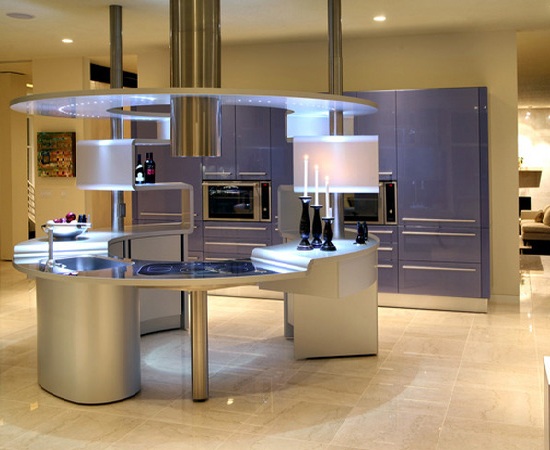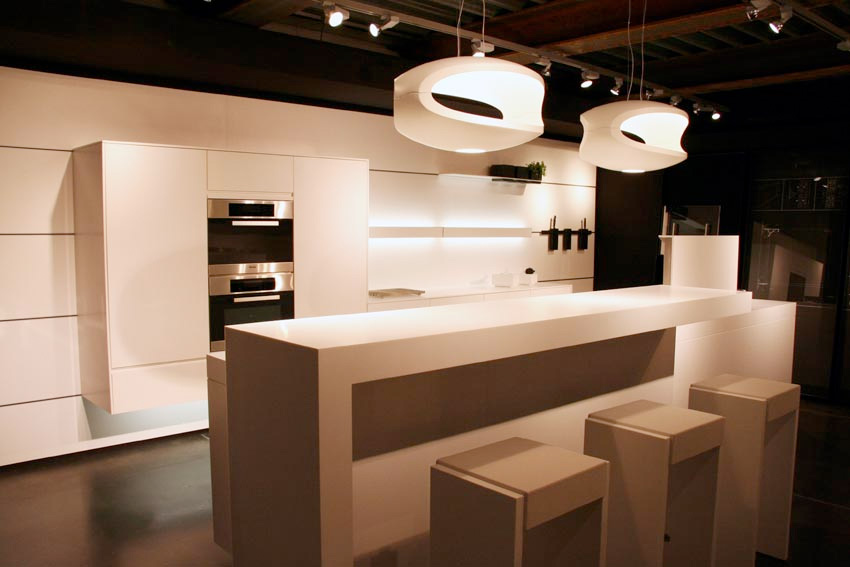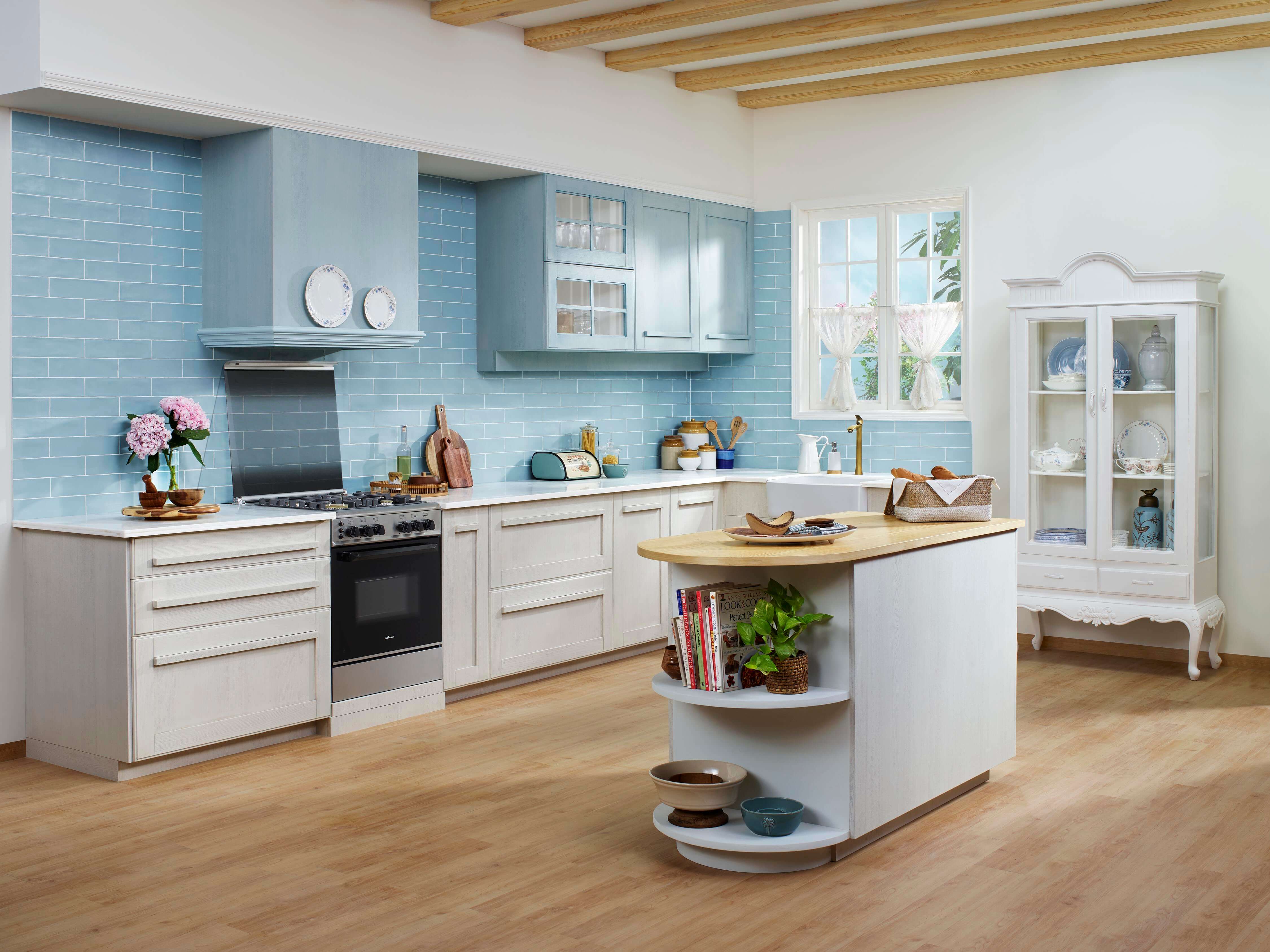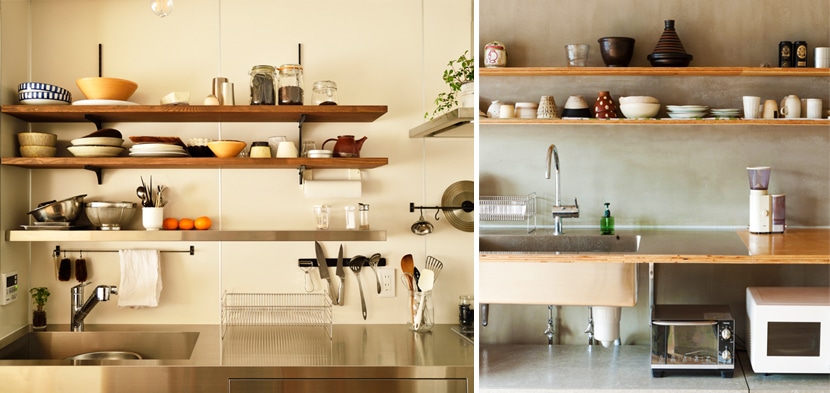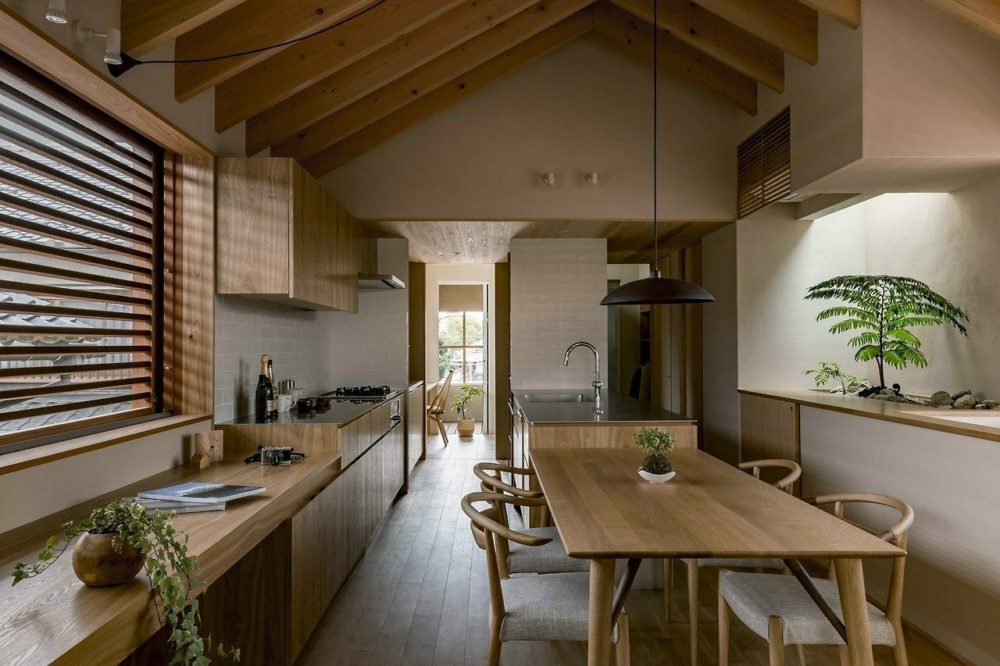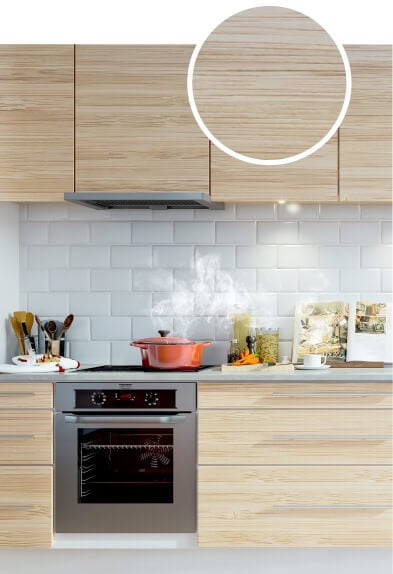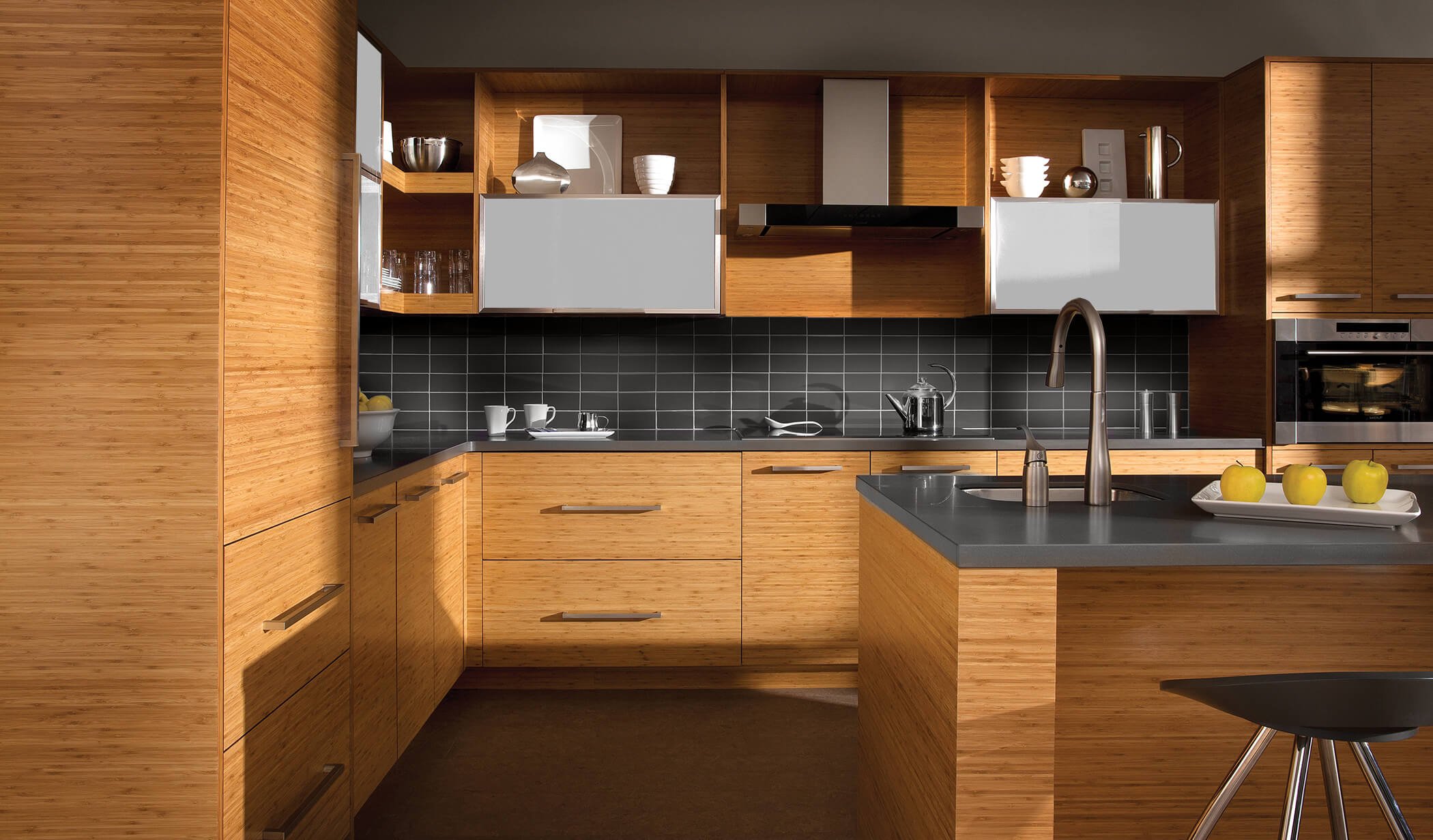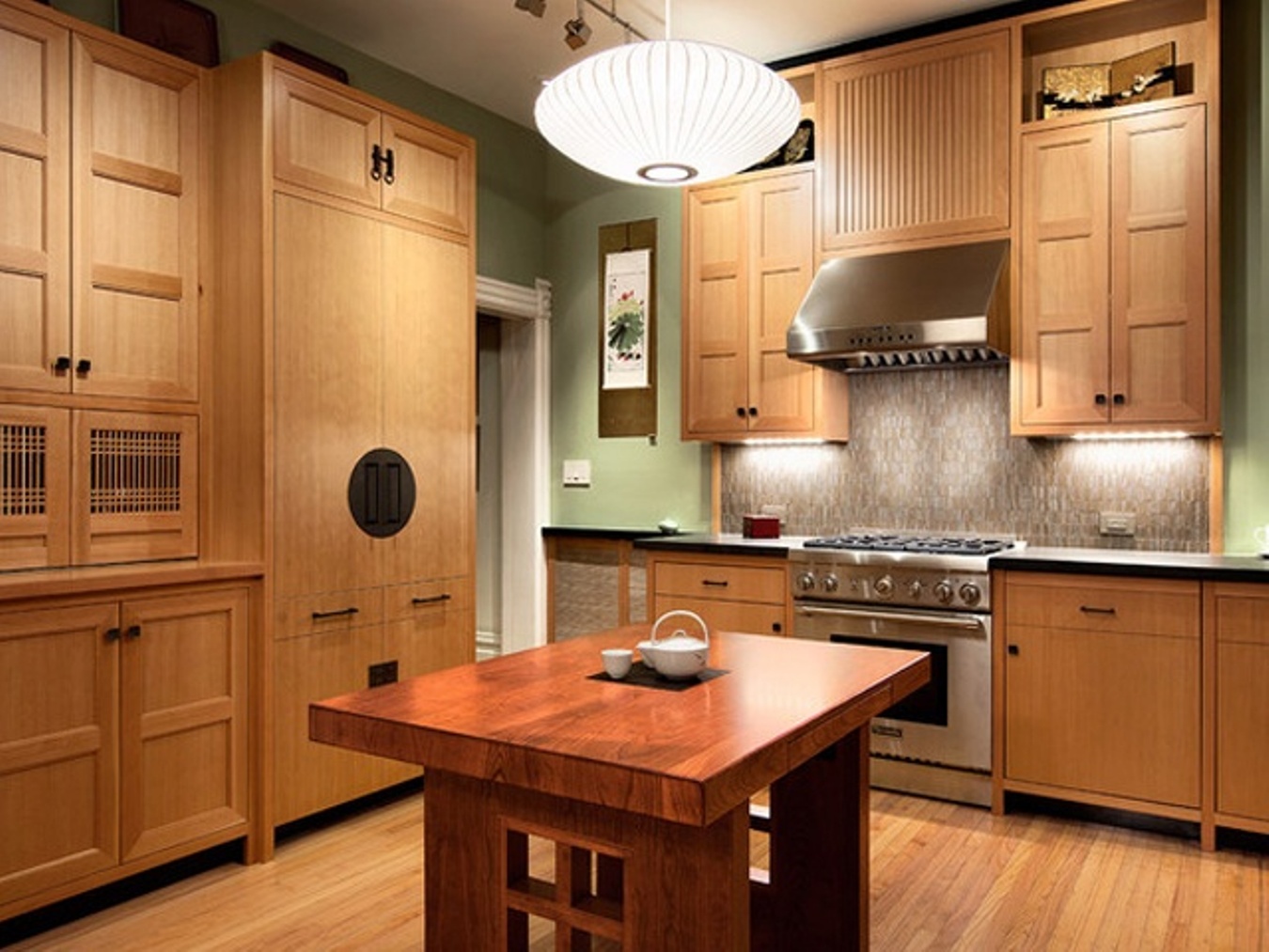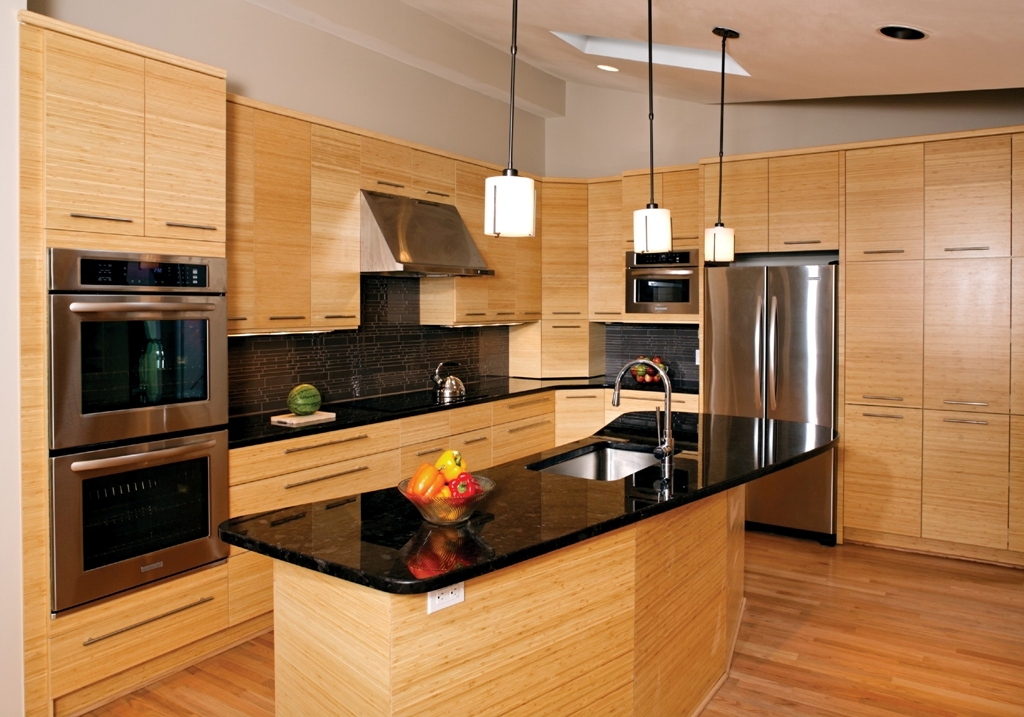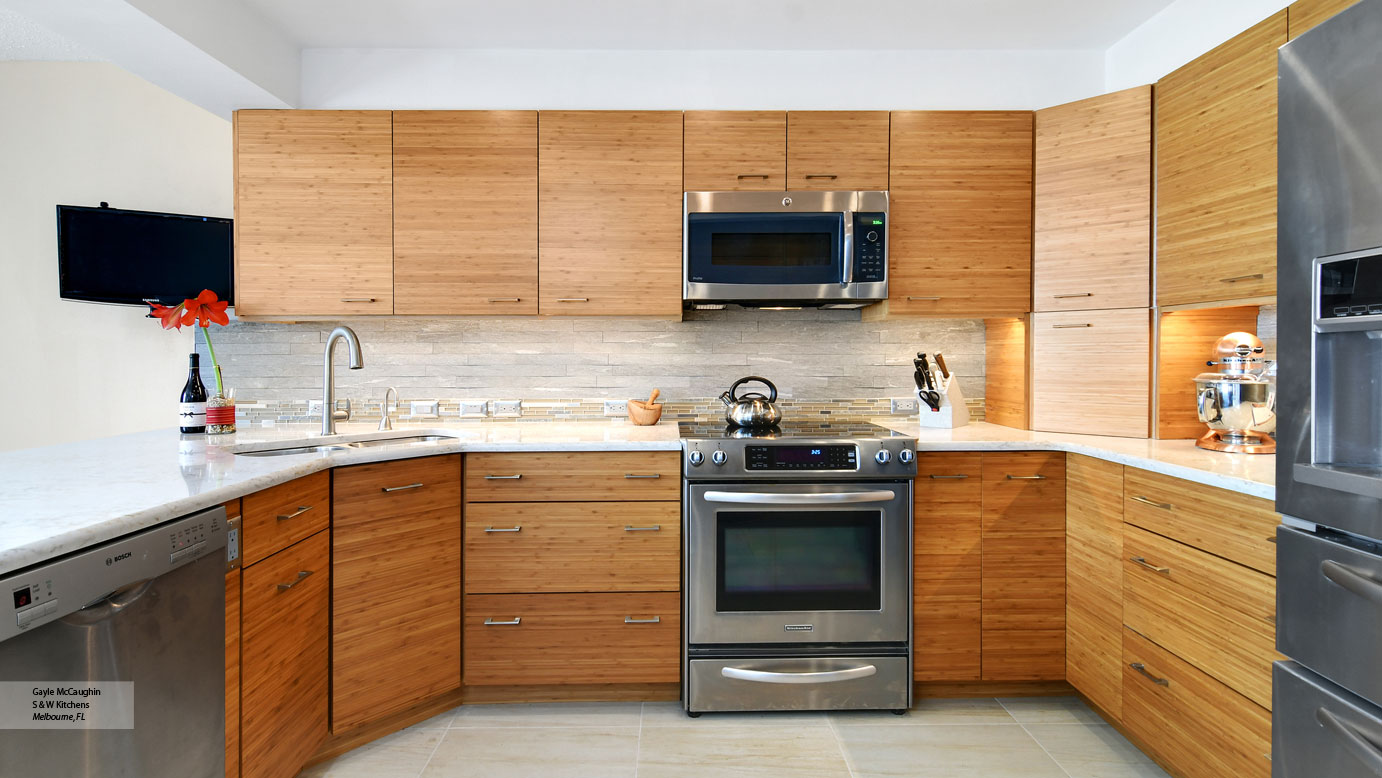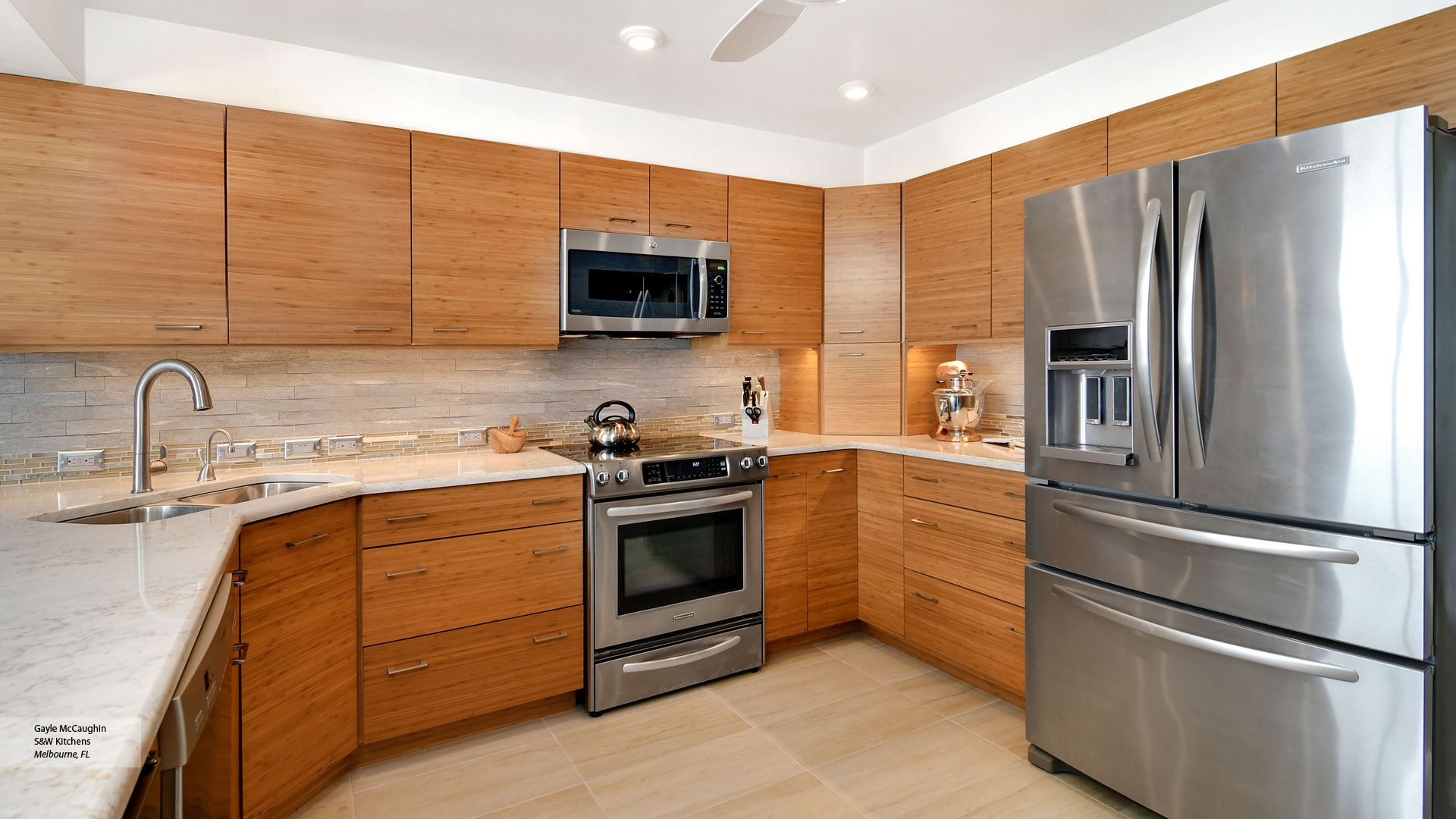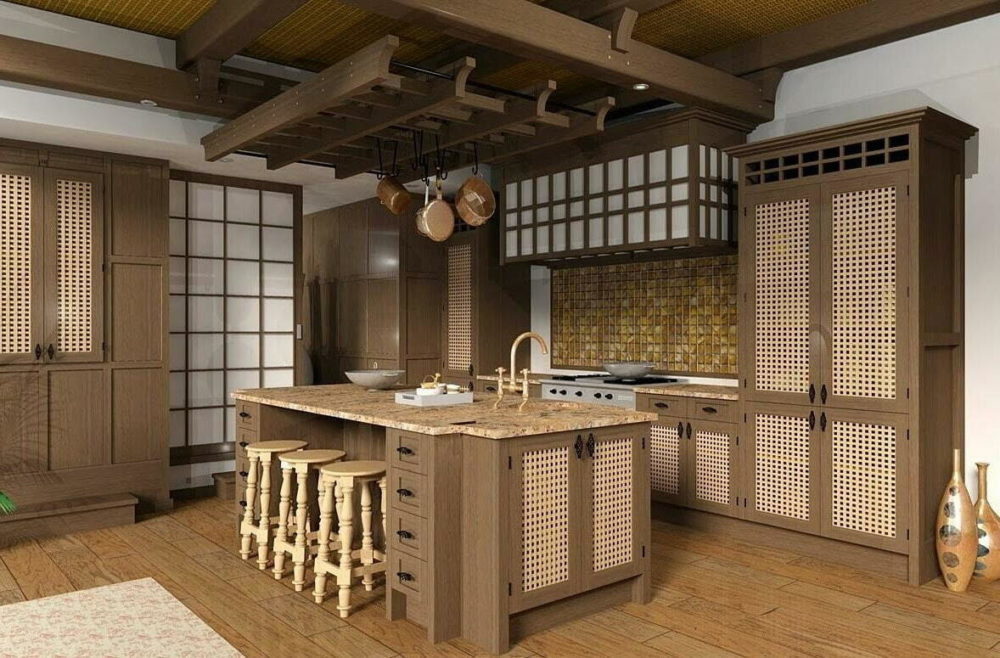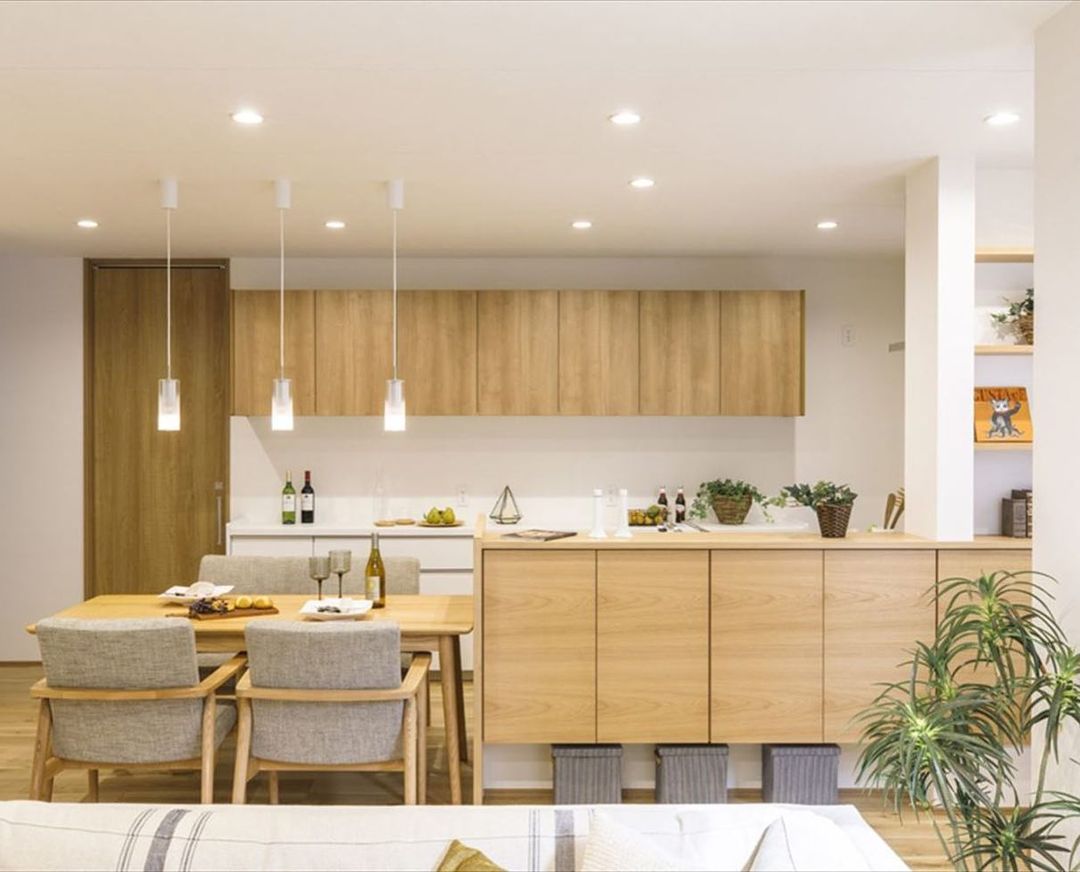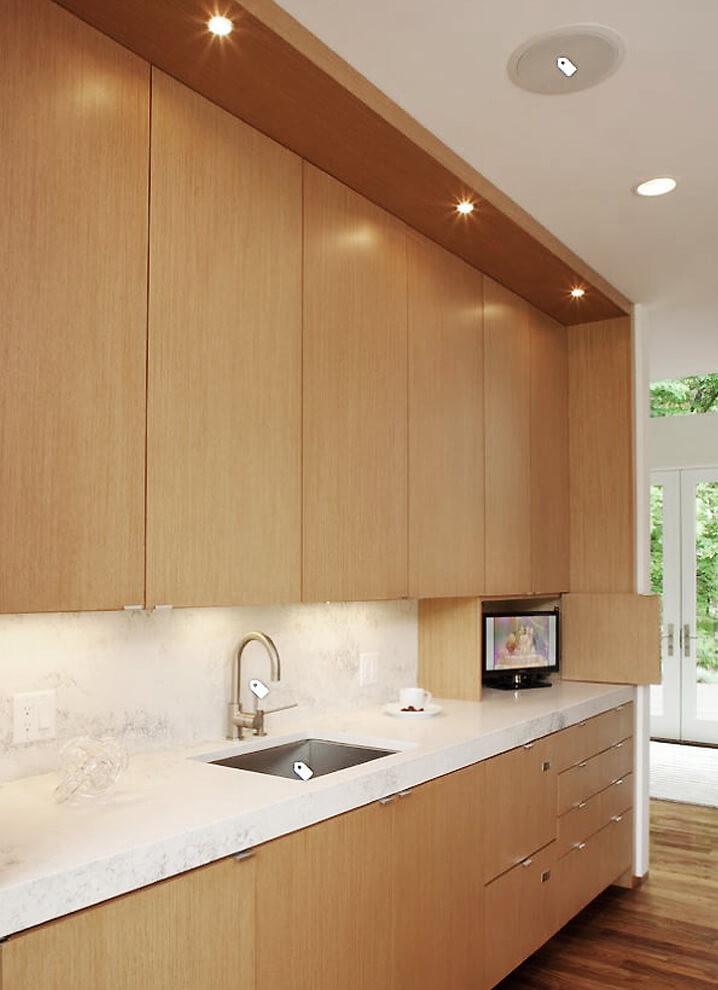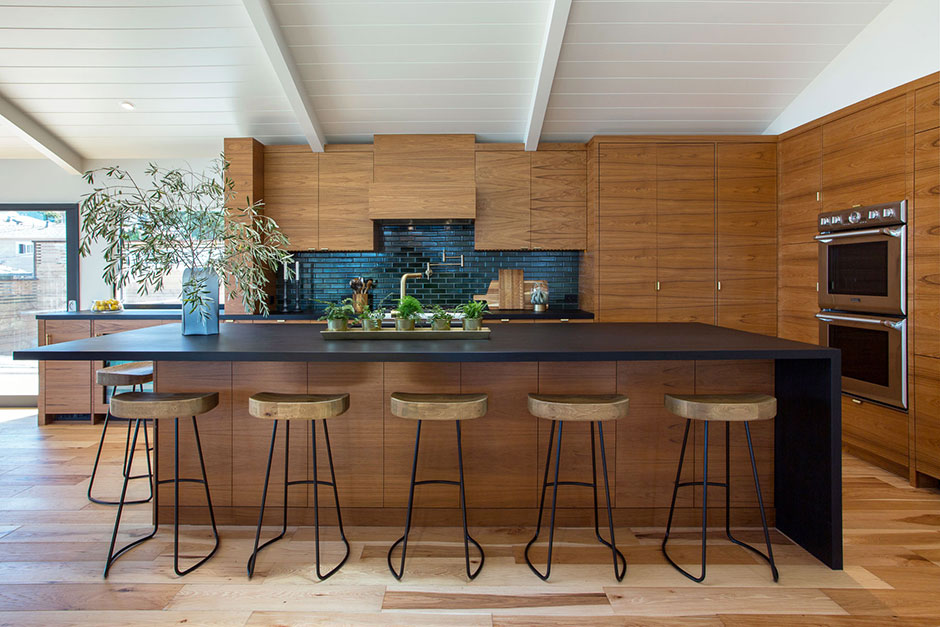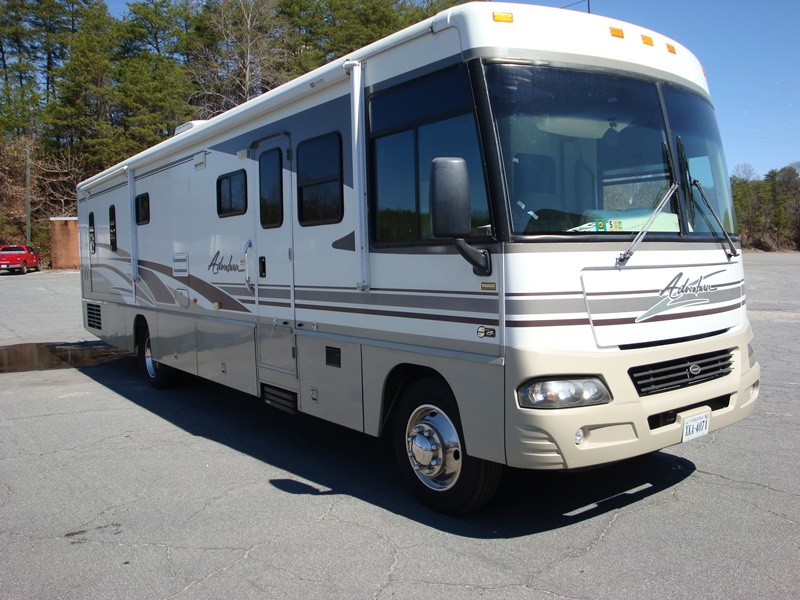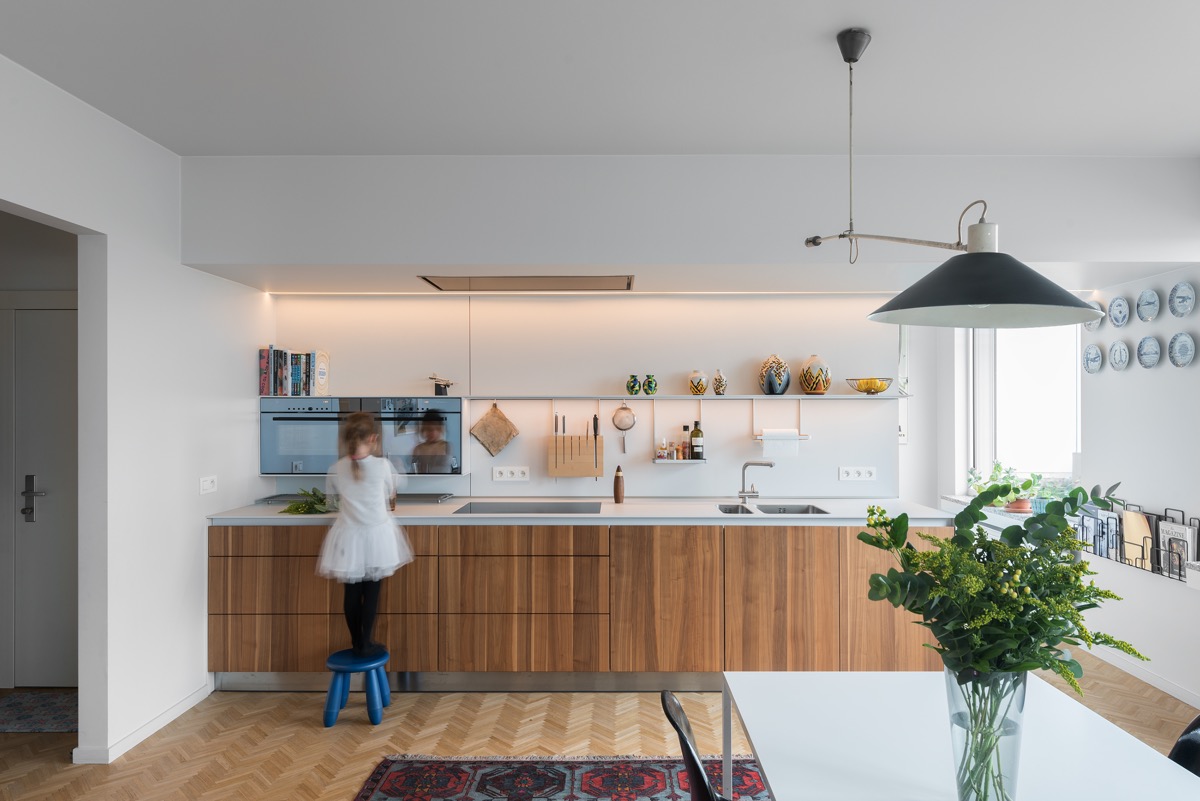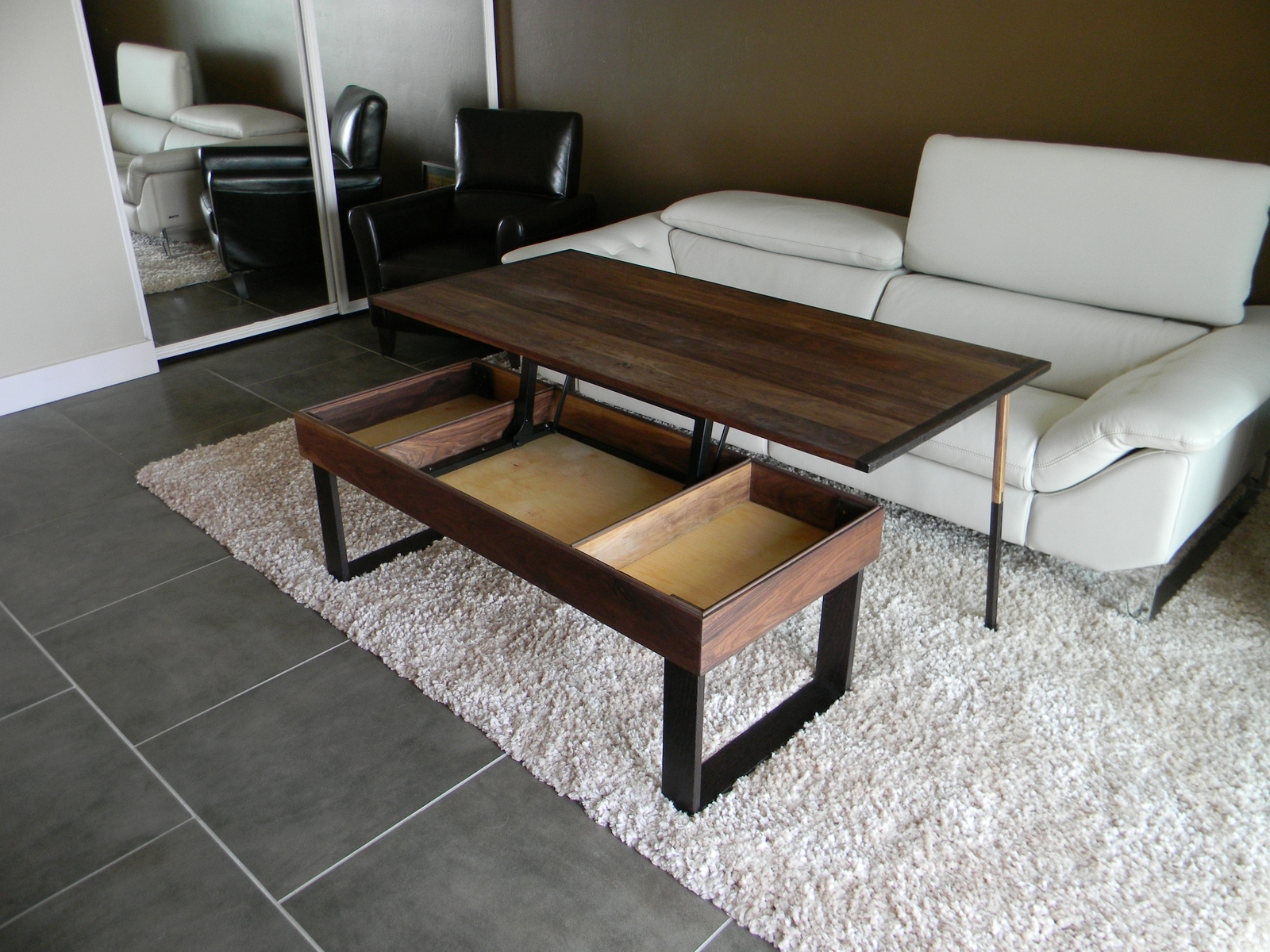When it comes to kitchen design, Japan is known for its elegant and functional style. Traditional Japanese kitchen cabinet design is a beautiful balance of simplicity and sophistication, making it a popular choice for many homeowners. These cabinets are designed to not only be aesthetically pleasing, but also highly functional and durable. The traditional Japanese kitchen cabinet design is characterized by clean lines, minimalistic design, and natural materials. These cabinets often feature dark wood tones, such as walnut or mahogany, with simple hardware and straight edges. The focus is on creating a calm and serene space that promotes harmony and balance. One key element of traditional Japanese kitchen cabinet design is the use of fusuma doors, which are sliding doors made of paper or fabric. These doors not only add to the aesthetic appeal of the cabinets, but also serve a practical purpose by allowing for easy access to the contents inside. The use of natural materials is also an important aspect of traditional Japanese design. Tatami mats, made of rice straw and covered in woven rush grass, are often used as flooring in traditional Japanese homes. These mats are also commonly used as cabinet liners, adding a touch of warmth and texture to the design.Traditional Japanese Kitchen Cabinet Design
While traditional Japanese kitchen cabinet design continues to be a popular choice, many homeowners are now opting for a more modern take on this classic style. Modern Japanese kitchen cabinet design combines the sleekness of contemporary design with the simplicity and functionality of traditional Japanese design. One key characteristic of modern Japanese kitchen cabinet design is the use of clean, straight lines. These cabinets often have a minimalist design, with no visible hardware and a focus on functionality. The color palette is usually kept neutral, with shades of white, black, and natural wood tones. Another important element of modern Japanese kitchen cabinet design is the incorporation of technology. Many modern cabinets now feature built-in appliances, such as ovens and microwaves, as well as touch-screen panels for controlling lighting and other kitchen functions. One unique feature of modern Japanese kitchen cabinet design is the use of shoji screens. These sliding screens, traditionally made of paper and wood, can be used to divide up the kitchen space or hide appliances when not in use.Modern Japanese Kitchen Cabinet Design
Less is more when it comes to minimalist Japanese kitchen cabinet design. This style is all about creating a clutter-free and streamlined space that promotes a sense of calm and tranquility. Minimalist Japanese cabinets are characterized by simple, clean lines and a focus on functionality. One key feature of minimalist Japanese kitchen cabinet design is the use of hidden storage. Cabinets are designed to hide away clutter and keep the kitchen looking neat and organized. This is achieved through the use of built-in appliances and clever storage solutions, such as pull-out drawers and shelves. The color palette for minimalist Japanese cabinets is usually kept neutral, with shades of white, gray, and light wood tones. This helps to create a sense of space and openness in the kitchen. The use of natural materials, such as wood and bamboo, is also common in this style. Another important element of minimalist Japanese kitchen cabinet design is the use of mizuya cabinets. These are traditional Japanese cabinets that have been adapted for modern use. They often feature open shelving and a simple design, making them perfect for displaying beautiful dishes and kitchenware.Minimalist Japanese Kitchen Cabinet Design
For those looking for a more avant-garde approach to Japanese kitchen cabinet design, the futuristic style may be the perfect fit. This style combines modern technology with traditional Japanese design elements to create a truly unique and futuristic look. Futuristic Japanese cabinets often have a sleek and glossy finish, with a mix of materials such as glass, metal, and wood. The focus is on creating a high-tech and streamlined space that is both functional and visually stunning. One key feature of futuristic Japanese kitchen cabinet design is the use of LED lighting. These cabinets often have built-in LED lights that can be adjusted to create different moods and ambiance in the kitchen. This also adds a touch of modernity and sophistication to the overall design. Another important element of futuristic Japanese cabinets is the use of smart technology. These cabinets can be controlled through a smartphone or tablet, allowing for easy access and control of appliances and lighting. This cutting-edge technology is what sets futuristic Japanese kitchen cabinet design apart from other styles.Futuristic Japanese Kitchen Cabinet Design
If you're a fan of Japanese design but want to incorporate some unique elements into your kitchen, Japanese-inspired kitchen cabinet design may be the perfect option. This style takes inspiration from traditional Japanese design but adds a modern twist. Japanese-inspired cabinets often feature a mix of materials, such as wood, glass, and metal, to create a visually interesting and dynamic look. They also often incorporate traditional Japanese elements, such as shibori patterns or kintsugi accents, to add a touch of culture and history to the design. The color palette for Japanese-inspired cabinets is usually kept neutral, with pops of color added through accessories and decor. This allows for a balance between traditional and modern elements in the design. One unique feature of Japanese-inspired kitchen cabinet design is the use of hidden storage. Cabinets often have cleverly designed compartments and drawers to hide away clutter and keep the kitchen looking clean and organized.Japanese-inspired Kitchen Cabinet Design
Simplicity and functionality are at the core of sleek Japanese kitchen cabinet design. This style is all about creating a clean and organized space that is both visually appealing and highly functional. Sleek Japanese cabinets often have a glossy finish and a minimalist design, with no visible hardware. They are usually made of high-quality materials, such as lacquered wood or metal, to create a sleek and modern look. The color palette for sleek Japanese cabinets is usually kept neutral, with shades of white, black, and gray. This helps to create a sense of space and openness in the kitchen. The use of natural materials, such as wood and stone, is also common in this style. One important element of sleek Japanese kitchen cabinet design is the use of open shelving. This not only adds to the minimalist aesthetic, but also allows for easy access to frequently used items and creates a sense of openness in the kitchen.Sleek Japanese Kitchen Cabinet Design
Open concept living has become increasingly popular in recent years, and this trend has extended to kitchen design as well. Open concept Japanese kitchen cabinet design is all about creating a seamless flow between the kitchen and living space. One key feature of open concept Japanese cabinets is the use of sliding doors. These doors can be used to separate the kitchen from the living space when needed, but can also be opened to create a sense of unity between the two areas. The design of open concept Japanese cabinets is often simple and streamlined, with a focus on functionality. They often have a mix of open shelving and hidden storage to create a balance between display and organization. The color palette for open concept Japanese cabinets is usually kept neutral, with pops of color added through accessories and decor. This allows for a cohesive and harmonious design throughout the open living space.Open Concept Japanese Kitchen Cabinet Design
Wood is a key element in traditional Japanese design, and this is also reflected in Japanese kitchen cabinet design. Wooden Japanese cabinets have a warm and inviting feel, and are often made of high-quality and natural materials. The use of natural wood in Japanese cabinets adds warmth and texture to the design. These cabinets often have a simple and minimalist design, with no visible hardware and clean lines. The color palette for wooden Japanese cabinets is usually kept in natural wood tones, such as walnut, cherry, or oak. This helps to create a sense of warmth and coziness in the kitchen. One unique feature of wooden Japanese kitchen cabinet design is the use of open shelving. This allows for the display of beautiful dishes and kitchenware, adding a touch of personality and charm to the space.Wooden Japanese Kitchen Cabinet Design
Bamboo is another key material in Japanese design, and it is often incorporated into kitchen cabinet design as well. Bamboo Japanese cabinets are not only visually appealing, but also highly durable and sustainable. The use of bamboo in Japanese cabinets adds a touch of nature and tranquility to the design. These cabinets often have a minimalist design, with no visible hardware and a focus on functionality. The color palette for bamboo Japanese cabinets is usually kept in natural wood tones, but can also be painted in shades of green or black for a more unique look. This allows for versatility and creativity in the design. One key element of bamboo Japanese kitchen cabinet design is the use of fusuma doors. These sliding doors, traditionally made of paper and bamboo, add to the natural and calming aesthetic of the cabinets.Bamboo Japanese Kitchen Cabinet Design
Zen design is all about creating a peaceful and harmonious space, and this is also reflected in Zen Japanese kitchen cabinet design. These cabinets are designed to promote a sense of relaxation and tranquility in the kitchen. One key feature of Zen Japanese cabinets is the use of neutral colors. This helps to create a calming atmosphere in the kitchen, with shades of white, beige, and light wood tones being the most common. The design of Zen Japanese cabinets is often simple and minimalist, with a focus on functionality and organization. These cabinets are designed to hide away clutter and create a clutter-free space. The use of natural materials, such as wood and stone, is also common in Zen Japanese kitchen cabinet design. This adds to the natural and serene feel of the space, promoting a sense of balance and harmony.Zen Japanese Kitchen Cabinet Design
The Influence of Japanese Kitchen Cabinet Design on Modern House Design
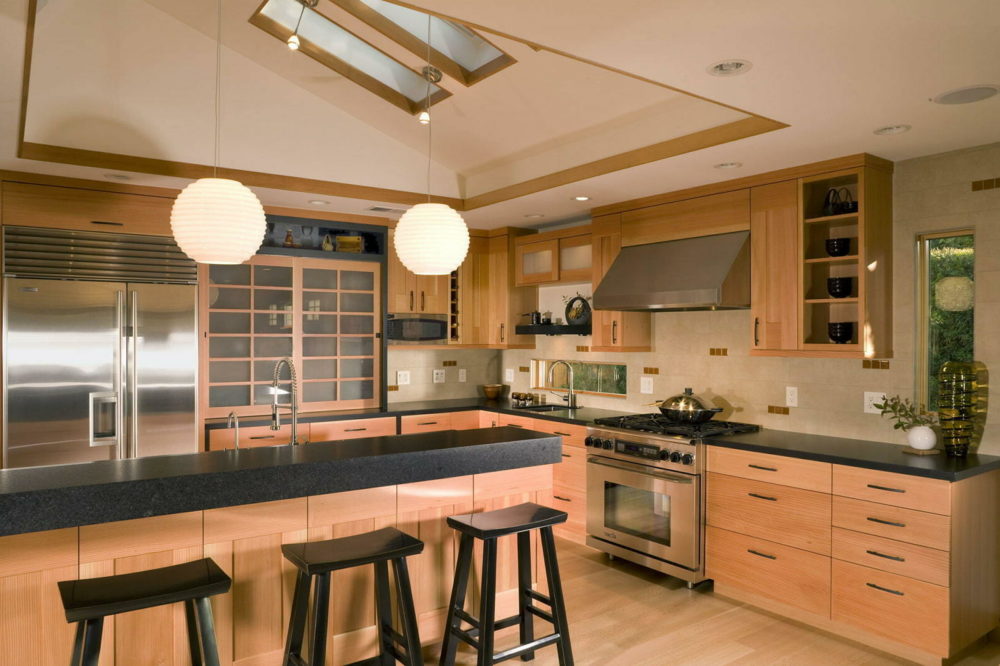
The Beauty of Japanese Kitchen Cabinet Design
 Japanese kitchen cabinet design has become increasingly popular in modern house design, and for good reason. The minimalist and functional approach of Japanese design has captivated homeowners and designers alike, and it has made its way into the heart of the home – the kitchen. The simplistic yet elegant style of Japanese kitchen cabinets brings a sense of calm and harmony to the space, creating a serene environment for cooking and dining. But what makes this design so special and how has it influenced modern house design?
Japanese kitchen cabinet design has become increasingly popular in modern house design, and for good reason. The minimalist and functional approach of Japanese design has captivated homeowners and designers alike, and it has made its way into the heart of the home – the kitchen. The simplistic yet elegant style of Japanese kitchen cabinets brings a sense of calm and harmony to the space, creating a serene environment for cooking and dining. But what makes this design so special and how has it influenced modern house design?
The Elements of Japanese Kitchen Cabinet Design
 Japanese kitchen cabinets are known for their clean lines, neutral colors, and natural materials. They are typically made of wood, with simple and straight designs that embrace the natural grain of the material. This creates a warm and inviting atmosphere in the kitchen, while also incorporating elements of nature into the space. The use of organic materials such as wood, bamboo, and stone also adds to the eco-friendly and sustainable aspect of Japanese design.
Minimalism
is a key element of Japanese kitchen cabinet design. The clutter-free and simplistic approach creates a sense of spaciousness and tranquility in the kitchen, which is essential in a busy household. This design philosophy also extends to the functionality of the cabinets, with clever storage solutions that maximize space and minimize clutter.
Japanese kitchen cabinets are known for their clean lines, neutral colors, and natural materials. They are typically made of wood, with simple and straight designs that embrace the natural grain of the material. This creates a warm and inviting atmosphere in the kitchen, while also incorporating elements of nature into the space. The use of organic materials such as wood, bamboo, and stone also adds to the eco-friendly and sustainable aspect of Japanese design.
Minimalism
is a key element of Japanese kitchen cabinet design. The clutter-free and simplistic approach creates a sense of spaciousness and tranquility in the kitchen, which is essential in a busy household. This design philosophy also extends to the functionality of the cabinets, with clever storage solutions that maximize space and minimize clutter.
The Influence on Modern House Design
 The rise of Japanese kitchen cabinet design has had a significant impact on modern house design. Its simplistic and functional approach has been incorporated into other areas of the home, such as living rooms, bedrooms, and bathrooms. The use of natural materials and neutral colors has also become a staple in modern interior design.
Moreover,
the concept of minimalism
has permeated into modern house design, with homeowners looking to declutter and simplify their living spaces. This not only creates a more harmonious environment but also promotes a more sustainable way of living.
In conclusion, Japanese kitchen cabinet design has had a significant influence on modern house design, bringing a sense of simplicity, tranquility, and functionality to the heart of the home. Its use of natural materials, clean lines, and minimalistic approach has made it a popular choice for homeowners and designers alike. Incorporating elements of Japanese design into your home can not only enhance its aesthetic appeal but also promote a more sustainable and mindful way of living.
The rise of Japanese kitchen cabinet design has had a significant impact on modern house design. Its simplistic and functional approach has been incorporated into other areas of the home, such as living rooms, bedrooms, and bathrooms. The use of natural materials and neutral colors has also become a staple in modern interior design.
Moreover,
the concept of minimalism
has permeated into modern house design, with homeowners looking to declutter and simplify their living spaces. This not only creates a more harmonious environment but also promotes a more sustainable way of living.
In conclusion, Japanese kitchen cabinet design has had a significant influence on modern house design, bringing a sense of simplicity, tranquility, and functionality to the heart of the home. Its use of natural materials, clean lines, and minimalistic approach has made it a popular choice for homeowners and designers alike. Incorporating elements of Japanese design into your home can not only enhance its aesthetic appeal but also promote a more sustainable and mindful way of living.









